#Loree Seitz
Explore tagged Tumblr posts
Text
2 notes
·
View notes
Text
I’m bored, have a crk x sdr2 recast
I scrapped the crk fangan sooo— (this is mostly in the context of the dr3 anime (end of hope’s peak) and i wanted to mesh both fandom’s lores together. Basically the whole “World is ending” of dr with the idea that crk’s ancient heroes are deceased)
Hajime Hinata/Izuru Kamukura- Dark Choco
Chiaki Nanami- Caramel Arrow
Nagito Komeada- Peach Blossom
Fuyuhiko Kuzuriu- Clotted Cream
Peko Pekoyama- Financier
Akane Owari- Tiger Lily
Nekomaru Nidai- Crunchy Chip (fun fact but Nekomaru and Dark Cacao share an English va; Patrick Seitz)
Hiyoko Saionji- Candy Apple
Mikan Tsumiki- Silverbell
Sonia Nevermind- Princess
Teruteru Hanumura- Royal Mangerine
Gunduam Tanaka- Nutmeg Tiger
Kazuichi Soda- Black Sapphire
Twogami- Affogato
Mahiru Koizumi- Kouign Amann
Ibuki Mioda- Raspberry
Ms. Yukizone- White Lily
Junko Enoshima- Shadow Milk
Mukuro Ikusaba- Pomegranate
#dark choco cookie#caramel arrow cookie#peach blossom cookie#clotted cream cookie#white lily cookie#financier cookie#kouign amann cookie#candy apple cookie#black sapphire cookie#affogato cookie#raspberry cookie#princess cookie#wildberry cookie#tiger lily cookie#nutmeg tiger cookie#royal margarine cookie#silverbell cookie#pomegranate cookie#shadow milk cookie#crk#cookie run#cookie run kingdom#danganronpa#super danganronpa 2#danganronpa 3#dr3#the end of hope’s peak academy#fandom crossover#yayy yippee
25 notes
·
View notes
Text

what a beautiful epitaph from Matt Zoller Seitz. I hope to live and make films and die well enough to be worthy of words like these.
Speaking of the grave: the late, great Tony Todd, who played funeral home proprietor, lore explicator, and series mascot William Bludworth, makes his final film appearance here, six months after his death from cancer. The result is not just a worthy sendoff for the character and the man who played him, but one of the very best scenes ever performed by an actor who knew he was dying and decided to make his last performance one for the ages. Hearing that rumbling voice come out of an emaciated and clearly suffering body is more unsettling than any of the film’s bloodbaths, but it’s also inspiring and moving. Todd was a consummate professional who wanted to give us one last thrill before he left, and he did.
But his cameo here is far more than a final IMDb credit. What he does here, in collaboration with his scene partners and the crew, is profound. He uses the inevitability of his death as fuel for his art, and retroactively deepens the whole franchise by connecting the reality of death to its spectacular representations onscreen. Todd knew when he showed up on set that he didn’t have much time left, and he knew that we would know that he didn’t have much time left as soon as we got a look at him. But he embraced all of that. What astonishing control and confidence the man had! Even in a weakened state, he knew he was still a badass with the presence, power, and voice to fill us with awe. I bet Death asked for his autograph.
5 notes
·
View notes
Text

Knight of Cups (Terrence Malick, 2015)
Cast: Christian Bale, Cate Blanchett, Natalie Portman, Brian Dennehy, Antonio Banderas, Frieda Pinto, Wes Bentley, Isabel Lucas, Teresa Palmer, Imogen Poots, Ben Kingsley (voice). Screenplay: Terrence Malick. Cinematography: Emmanuel Lubezki. Production design: Jack Fisk. Film editing: A.J. Edwards, Keith Fraase, Geoffrey Richman, Mark Yoshikawa. Music: Hanan Townshend.
Two films kept coming to mind as I watched Terrence Malick's Knight of Cups: Federico Fellini's La Dolce Vita (1960) and Andrei Tarkovsky's Mirror (1975). Fellini's film because the journey of Malick's protagonist, Rick (Christian Bale), through the decadence of Hollywood and Las Vegas echoes that of Marcello's (Marcello Mastroianni) explorations of Rome. Tarkovsky's because Malick's exploration of Rick's life exhibits a similar steadfast refusal to adhere to a strict linear narrative. Most of us go to movies to have stories told to us. Our lives are a web of stories, told to us by history and religion and science and society, and most explicitly by art. We tend to prefer the old linear progression of storytelling: beginning, middle, end, or the familiar five-act structure of situation, complication, crisis, struggle, and resolution. But artists tend to get weary of the straightforward approach; they like to mix things up, to find new ways of storytelling. The modernist novelists like Joyce and Woolf and Faulkner eschewed linearity, and filmmakers have tried to take a similar course. They have the advantage of working with images as well as words. So Malick, like Tarkovsky and Fellini and others, experiments with editing and montage to meld images with language and gesture to probe the psychological depths of human character and experience. The problem with experimentation is that experiments fail more often than they succeed. Some think that Knight of Cups is a successful experiment, but most critics and much of the film's audience seem to disagree, to judge from, for example, a 5.6 rating on IMDb. Knight of Cups spent two years in post-production and there are four credited film editors, which suggests that Malick over-reached himself. For me, what was lost in the process of making the film was a clarity of vision. Granted, the lives of human beings are messy, loose-ended things, but what do we depend on artists to do but try to make sense of them. I think Malick lost sight of his protagonist, Rick, in trying to interpret his life and loves through the film's odd amalgamation of John Bunyan's Pilgrim's Progress and the Major Arcana of the tarot pack and then overlaying it with a collage of images provided by Emmanuel Lubezki's camera. We glimpse Rick through filters, grasping for moments that will resolve into something substantial about him, his problems with his family and with women. And for all the casting of fine actors like Bale and Cate Blanchett and Natalie Portman, the production negates their attempts to create characters. In fact, their starriness works against them: Instead of being drawn into the character of Rick or Nancy or Elizabeth, we're removed from them by the familiarity of the actor playing them. I understand what admirers of the film like Matt Zoller Seitz are saying when they proclaim, "The sheer freedom of it is intoxicating if you meet the film on its own level, and accept that it's unfinished, open-ended, by design, because it's at least partly concerned with the impossibility of imposing meaningful order on experience, whether through religion, occult symbolism, mass-produced images and stories, or family lore." But I wonder if that's enough to make an experiment successful. I came away from Knight of Cups knowing nothing more about its characters than I did before I met them.
3 notes
·
View notes
Text
‘Superman & Lois,’ ‘The Librarians: The Next Chapter’ Lead CW Fall 2024 Slate
Loree Seitz
Thu, May 16, 2024 at 8:00 AM CDT
#leverage#christian kane#christiankane#kaniacs#thelibrarians#almost paradise#entertainment news#entertainment#the wrap#the next chapter#the librarians the next chapter
0 notes
Text





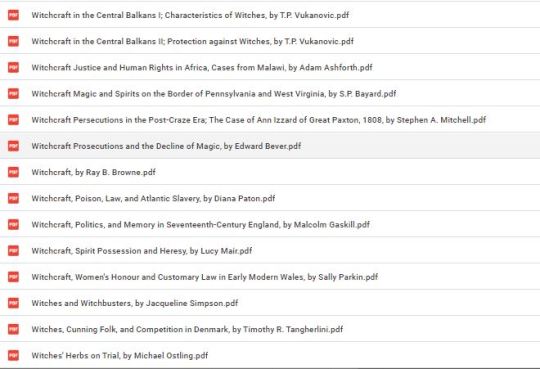
JSTOR Articles on the History of Witchcraft, Witch Trials, and Folk Magic Beliefs
This is a partial of of articles on these subjects that can be found in the JSTOR archives. This is not exhaustive - this is just the portion I've saved for my own studies (I've read and referenced about a third of them so far) and I encourage readers and researchers to do their own digging. I recommend the articles by Ronald Hutton, Owen Davies, Mary Beth Norton, Malcolm Gaskill, Michael D. Bailey, and Willem de Blecourt as a place to start.
If you don't have personal access to JSTOR, you may be able to access the archive through your local library, university, museum, or historical society.
Full text list of titles below the cut:
'Hatcht up in Villanie and Witchcraft': Historical, Fiction, and Fantastical Recuperations of the Witch Child, by Chloe Buckley
'I Would Have Eaten You Too': Werewolf Legends in the Flemish, Dutch and German Area, by Willem de Blecourt
'The Divels Special Instruments': Women and Witchcraft before the Great Witch-hunt, by Karen Jones and Michael Zell
'The Root is Hidden and the Material Uncertain': The Challenges of Prosecuting Witchcraft in Early Modern Venice, by Jonathan Seitz
'Your Wife Will Be Your Biggest Accuser': Reinforcing Codes of Manhood at New England Witch Trials, by Richard Godbeer
A Family Matter: The CAse of a Witch Family in an 18th-Century Volhynian Town, by Kateryna Dysa
A Note on the Survival of Popular Christian Magic, by Peter Rushton
A Note on the Witch-Familiar in Seventeenth Century England, by F.H. Amphlett Micklewright
African Ideas of Witchcraft, by E.G. Parrinder
Aprodisiacs, Charms, and Philtres, by Eleanor Long
Charmers and Charming in England and Wales from the Eighteenth to the Twentieth Century, by Owen Davies
Charming Witches: The 'Old Religion' and the Pendle Trial, by Diane Purkiss
Demonology and Medicine in the Sixteenth and Seventeenth Centuries, by Sona Rosa Burstein
Denver Tries A Witch, by Margaret M. Oyler
Devil's Stones and Midnight Rites: Megaliths, Folklore, and Contemporary Pagan Witchcraft, by Ethan Doyle White
Edmund Jones and the Pwcca'r Trwyn, by Adam N. Coward
Essex County Witchcraft, by Mary Beth Norton
From Sorcery to Witchcraft: Clerical Conceptions of Magic in the Later Middle Ages, by Michael D. Bailey
German Witchcraft, by C. Grant Loomis
Getting of Elves: Healing, Witchcraft and Fairies in the Scottish Witchcraft Trials, by Alaric Hall
Ghost and Witch in the Sixteenth and Seventeenth Centuries, by Gillian Bennett
Ghosts in Mirrors: Reflections of the Self, by Elizabeth Tucker
Healing Charms in Use in England and Wales 1700-1950, by Owen Davies
How Pagan Were Medieval English Peasants?, by Ronald Hutton
Invisible Men: The Historian and the Male Witch, by Lara Apps and Andrew Gow
Johannes Junius: Bamberg's Famous Male Witch, by Lara Apps and Andrew Gow
Knots and Knot Lore, by Cyrus L. Day
Learned Credulity in Gianfrancesco Pico's Strix, by Walter Stephens
Literally Unthinkable: Demonological Descriptions of Male Witches, by Lara Apps and Andrew Gow
Magical Beliefs and Practices in Old Bulgaria, by Louis Petroff
Maleficent Witchcraft in Britian since 1900, by Thomas Waters
Masculinity and Male Witches in Old and New England, 1593-1680, by E.J. Kent
Methodism, the Clergy, and the Popular Belief in Witchcraft and Magic, by Owen Davies
Modern Pagan Festivals: A Study in the Nature of Tradition, by Ronald Hutton
Monstrous Theories: Werewolves and the Abuse of History, by Willem de Blecourt
Neapolitan Witchcraft, by J.B. Andrews and James G. Frazer
New England's Other Witch-Hunt: The Hartford Witch-Hunt of the 1660s and Changing Patterns in Witchcraft Prosecution, by Walter Woodward
Newspapers and the Popular Belief in Witchcraft and Magic in the Modern Period, by Owen Davies
Occult Influence, Free Will, and Medical Authority in the Old Bailey, circa 1860-1910, by Karl Bell
Paganism and Polemic: The Debate over the Origins of Modern Pagan Witchcraft, by Ronald Hutton
Plants, Livestock Losses and Witchcraft Accusations in Tudor and Stuart England, by Sally Hickey
Polychronican: Witchcraft History and Children, interpreting England's Biggest Witch Trial, 1612, by Robert Poole
Publishing for the Masses: Early Modern English Witchcraft Pamphlets, by Carla Suhr
Rethinking with Demons: The Campaign against Superstition in Late Medieval and Early Modern Europe from a Cognitive Perspective, by Andrew Keitt
Seasonal Festivity in Late Medieval England, Some Further Reflections, by Ronald Hutton
Secondary Targets: Male Witches on Trial, by Lara Apps and Andrew Gow
Some Notes on Modern Somerset Witch-Lore, by R.L. Tongue
Some Notes on the History and Practice of Witchcraft in the Eastern Counties, by L.F. Newman
Some Seventeenth-Century Books of Magic, by K.M. Briggs
Stones and Spirits, by Jane P. Davidson and Christopher John Duffin
Superstitions, Magic, and Witchcraft, by Jeffrey R. Watt
The 1850s Prosecution of Gerasim Fedotov for Witchcraft, by Christine D. Worobec
The Catholic Salem: How the Devil Destroyed a Saint's Parish (Mattaincourt, 1627-31), by William Monter
The Celtic Tarot and the Secret Tradition: A Study in Modern Legend Making, by Juliette Wood
The Cult of Seely Wights in Scotland, by Julian Goodare
The Decline of Magic: Challenge and Response in Early Enlightenment England, by Michael Hunter
The Devil-Worshippers at the Prom: Rumor-Panic as Therapeutic Magic, by Bill Ellis
The Devil's Pact: Diabolic Writing and Oral Tradition, by Kimberly Ball
The Discovery of Witches: Matthew Hopkins' Defense of his Witch-hunting Methods, by Sheilagh Ilona O'Brien
The Disenchantment of Magic: Spells, Charms, and Superstition in Early European Witchcraft Literature, by Michael D. Bailey
The Epistemology of Sexual Trauma in Witches' Sabbaths, Satanic Ritual Abuse, and Alien Abduction Narratives, by Joseph Laycock
The European Witchcraft Debate and the Dutch Variant, by Marijke Gijswijt-Hofstra
The Flying Phallus and the Laughing Inquisitor: Penis Theft in the Malleus Maleficarum, by Moira Smith
The Framework for Scottish Witch-Hunting for the 1590s, by Julian Goodare
The Imposture of Witchcraft, by Rossell Hope Robbins
The Last Witch of England, by J.B. Kingsbury
The Late Lancashire Witches: The Girls Next Door, by Meg Pearson
The Malefic Unconscious: Gender, Genre, and History in Early Antebellum Witchcraft Narratives, by Lisa M. Vetere
The Mingling of Fairy and Witch Beliefs in Sixteenth and Seventeenth Century Scotland, by J.A. MacCulloch
The Nightmare Experience, Sleep Paralysis, and Witchcraft Accusations, by Owen Davies
The Pursuit of Reality: Recent Research into the History of Witchcraft, by Malcolm Gaskill
The Reception of Reginald Scot's Discovery of Witchcraft: Witchcraft, Magic, and Radical Religions, by S.F. Davies
The Role of Gender in Accusations of Witchcraft: The Case of Eastern Slovenia, by Mirjam Mencej
The Scottish Witchcraft Act, by Julian Goodare
The Werewolves of Livonia: Lycanthropy and Shape-Changing in Scholarly Texts, 1550-1720, by Stefan Donecker
The Wild Hunter and the Witches' Sabbath, by Ronald Hutton
The Winter Goddess: Percht, Holda, and Related Figures, by Lotta Motz
The Witch's Familiar and the Fairy in Early Modern England and Scotland, by Emma Wilby
The Witches of Canewdon, by Eric Maple
The Witches of Dengie, by Eric Maple
The Witches' Flying and the Spanish Inquisitors, or How to Explain Away the Impossible, by Gustav Henningsen
To Accommodate the Earthly Kingdom to Divine Will: Official and Nonconformist Definitions of Witchcraft in England, by Agustin Mendez
Unwitching: The Social and Magical Practice in Traditional European Communities, by Mirjam Mencej
Urbanization and the Decline of Witchcraft: An Examination of London, by Owen Davies
Weather, Prayer, and Magical Jugs, by Ralph Merrifield
Witchcraft and Evidence in Early Modern England, by Malcolm Gaskill
Witchcraft and Magic in the Elizabethan Drama by H.W. Herrington
Witchcraft and Magic in the Rochford Hundred, by Eric Maple
Witchcraft and Old Women in Early Modern Germany, by Alison Rowlands
Witchcraft and Sexual Knowledge in Early Modern England, by Julia M. Garrett
Witchcraft and Silence in Guillaume Cazaux's 'The Mass of Saint Secaire', by William G. Pooley
Witchcraft and the Early Modern Imagination, by Robin Briggs
Witchcraft and the Western Imagination by Lyndal Roper
Witchcraft Belief and Trals in Early Modern Ireland, by Andrew Sneddon
Witchcraft Deaths, by Mimi Clar
Witchcraft Fears and Psychosocial Factors in Disease, by Edward Bever
Witchcraft for Sale, by T.M. Pearce
Witchcraft in Denmark, by Gustav Henningsen
Witchcraft in Germany, by Taras Lukach
Witchcraft in Kilkenny, by T. Crofton Croker
Witchcraft in Anglo-American Colonies, by Mary Beth Norton
Witchcraft in the Central Balkans I: Characteristics of Witches, by T.P. Vukanovic
Witchcraft in the Central Balkans II: Protection Against Witches, by T.P. Vukanovic
Witchcraft Justice and Human Rights in Africa, Cases from Malawi, by Adam Ashforth
Witchcraft Magic and Spirits on the Border of Pennsylvania and West Virginia, by S.P. Bayard
Witchcraft Persecutions in the Post-Craze Era: The Case of Ann Izzard of Great Paxton, 1808, by Stephen A. Mitchell
Witchcraft Prosecutions and the Decline of Magic, by Edward Bever
Witchcraft, by Ray B. Browne
Witchcraft, Poison, Law, and Atlantic Slavery, by Diana Paton
Witchcraft, Politics, and Memory in Seventeeth-Century England, by Malcolm Gaskill
Witchcraft, Spirit Possession and Heresy, by Lucy Mair
Witchcraft, Women's Honour and Customary Law in Early Modern Wales, by Sally Parkin
Witches and Witchbusters, by Jacqueline Simpson
Witches, Cunning Folk, and Competition in Denmark, by Timothy R. Tangherlini
Witches' Herbs on Trial, by Michael Ostling
#witchcraft#witchblr#history#history of witchcraft#occult#witch trials#research#recommended reading#book recs#jstor
2K notes
·
View notes
Text
this that and other retarded crap…
why I left America a decade ago…
BTW and FYI the rest of the world is just as retarded…
————-
Lauren Boebert Says Student Relief Plan Funds ‘Lesbian Dance Theory,’ Activates Trolls: ‘I Need to Change My Major NOW’
—-Loree Seitz
—————-
A Catholic charity hired a man to simulate a mass shooting at their building, complete with actors covered in blood. The drill ended with his arrest.
—-Isabella Zavarise
————
The leader of Latinos for Trump says the former president has been getting into so much trouble because he 'offended the Lord'
—-Cheryl Teh
————
It's now illegal for anyone under 21 to buy canned whipped cream in New York, officials say it's to stop teens from inhaling nitrous oxide
—Katie Balevic
Sen. Lindsey Graham said if Trump is prosecuted for mishandling classified information 'there will be riots in the streets'
—Kelsey Vlamis
Lady Graham is fingering her cnut in public AGAIN…
smells like election fever is vigorously wanking…
5 notes
·
View notes
Note
Do you feel 3H would've been better if they encouraged the players to play the other routes instead having the players choose any route they like and then not encourage them to play the others?
On the one hand...maybe it's just me, but when I find out that a game has multiple routes, I play them all anyway, regardless of whether it encourages me to or not. I mean I paid sixty bucks for the thing, I'd like to get as much out of it as possible. That, and I knew once I got into it that this wasn't a game I'd just casually enjoy, and that I'd get into the fandom for it; when I do that, I don't like operating without as much first-hand knowledge as possible. If I'm gonna run my mouth about something, I like to be able to confirm that I know what I'm talking about.
On the other hand, not everyone is like me. I genuinely can't understand buying a brand-new video game at full price and not getting all the content you can out of it, but that doesn't mean everyone is like that, and honestly? Even with that view in mind, it was STILL tempting to just stick with VW because I love my Deer so much, and I think the developers predicted that we'd all get attached to our favored route. So yeah, that's a long-winded way of saying that they should have encouraged you to play everything to get the full story.
That's one part of the greater whole of 3H's biggest issue, though. Don't get me wrong, I love this game, but it relies too much on implications and symbolism. It needed to push itself further, and more clearly communicate what it's trying to do and say. My initial reaction is to be annoyed that a game marketed to teenagers and adults would need to spoonfeed stuff like that to us, but most people are playing the game casually for entertainment and don't have the time or patience to do a deep dive into the lore. It's on the creatives to make their intentions clear.
That being said, at the same time, if you ARE going to engage in fandom and meta for something, especially something with as much worldbuilding and lore as 3H, then you absolutely need to be willing to put in some time and reading comprehension—and in that respect, I think the game overestimates its audience.
(Things are not helped by Treehouse deliberately altering things in localization to fit their very Western view of a Japanese game. I desperately hope NoJ/Intsys learns from this and puts Treehouse on a leash in the future. Keep Seitz and his goons away from Fire Emblem.)
6 notes
·
View notes
Photo

Castlevania: the 4th and Final Season
FredFilms Postcard Series 3.1
Kevin Kolde is the visionary behind the entire Castlevania series on Netflix. Full stop.
Kevin’s the guy who saw ahead that video games would more and more often be fertile ground for story adaptation, working long and hard to get the Castlevania: Dracula’s Curse rights from Konami more than a decade ago. He admired Warren Ellis’ graphic novel writing, his ability to develop characters where there were none (let’s face it, there were 8-bit designs that looked like humans and they were named, but...), and trust him to write his first screenplay (the project was originally written to be an animated movie). And Warren delivered beyond the call of duty, it’s obvious.
The team at Powerhouse Animation (led by Brad Graber, and in the case of Castlevania, driven first by Adam Deats before his brother Sam Deats joined the project) sent along a blind presentation, before they’d even seen the script, that Kevin immediately grokked was right on the nose. And boy, did they work hard and more these last six years!
And then, after years of soul crushing rejection, our friend Ted Biaselli brought Kevin around Netflix until Larry Tanz saw the vision and came aboard in 2015. The rest is history.
From WikiMilli:
The review aggregation website Rotten Tomatoes reported that 82% of critics have given the first season a positive review based on 28 reviews, with an average rating of 7.61/10. The site's critics consensus reads, "Castlevania offers spectacular visuals and a compelling adaptation in its all-too-short first season." It is the first video game adaptation in the site's history to receive a "Fresh" rating. Metacritic, which assigns a rating out of 100 to reviews from mainstream critics, reported that there were "generally favorable reviews" for the first season, with an weighted average score of 71 based on 5 reviews.
The Verge gave a mixed review, noting that the gore did little to create a sense of danger and felt "intentionally flashy". It concluded that "Castlevania is ripe with potential, but also burdened with clichés." [37] Dave Trumbore of Collider gave the series four stars out of five, praising the chemistry between the cast and comparing the violence with anime such as Ninja Scroll . [38] IGN also wrote glowingly of Warren Ellis's script, but felt some of his humor was a little jarring. [39] In a review for Paste Magazine , Dave Raposo wrote that Castlevania channeled the cutaway gag formula that is seen in Family Guy . He dismissed the "absurd" attempts at humanizing Dracula and called it a "milquetoast imitation of Game of Thrones ", noting that the ambitions of the script "fly in the face of the simple ideals that unify the best entries in the Castlevania series".
Several reviews lauded the voice cast, particularly Graham McTavish as Dracula and Richard Armitage as Trevor Belmont. Screen Rant 's Sarah Moran drew attention to the "sarcastic edge" that Armitage brought to the character, and also noted Callis's "air of sophistication" as Alucard.Destructoid also wrote positively of Trevor Belmont as a protagonist, but criticized the animation and added that the character designs were "flat".Dan Seitz at Uproxx left a negative review, writing that it tried too hard to find profundity in the story of the Castlevania series. He also cited issues with the pacing.
Rotten Tomatoes reported that 100% of critics have given the second season a positive review with an average rating of 9.3/10, based on 15 reviews. The critics consensus reads, "Castlevania sinks its fangs into vampiric lore during a devilishly fun second season that benefits from an expanded sense of scale and episode tally that allows the series to fully spread its leathery wings."
One quick story. When Kevin originally joined me at Frederator around 2005 he told me he had the Castlevania rights that he wanted to keep out of the deal. After he explained to me what he wanted to do– saying something like “all the video game adaptations suck, I want to make the best one ever!”– I said that even though we’d been known for kids comedies, I wanted in on anything he wanted to do. Anything.
Little did I know where his visions would lead. Thanks Kevin!
.....
From the postcard back:
Congratulations! You are one of 100 people to receive this limited edition FredFilms postcard!
www.fredfilms.com
Castlevania Netlfix Season 4 May 5, 2021
Executive Producers Kevin Kolde & Warren Ellis Fred Seibert, Larry Tanz, Ted Biaselli
Series 3.1 [mailed out May 26, 2021]
9 notes
·
View notes
Quote
The vast majority of these blockbusters are not intended as freestanding works of expression. They're meant to function as cogs in a content-producing machine that largely avoids painful or unanswerable questions, feeding disposable imagery and situations to viewers who expect to be rewarded for their brand loyalty and familiarity with comics lore by being given more and more and more of the thing they already know they like. The Snyder Cut, in comparison, gets closer to what Scorsese envisioned than nearly anything else the genre has produced.
Matt Zoller Seitz
#matt is one of my favorite critics#the book that compiles his reviews of each of the mad men episodes is soooo good and the fact that he has this to say about zsjl feels great#matt zoller seitz#zack snyder's justice league#reviews#quotes
14 notes
·
View notes
Text
Mortal Kombat Legends: Scorpion’s Revenge
Mortal Kombat Legends: Scorpion’s Revenge is a 2020 animation film directed by Ethan Spaulding. It stars Joel McHale, Patrick Seitz and Jennifer Carpenter. The film is set around the Mortal Kombat tournament, where Scorpion awaits his revenge on Sub-Zero after his family is brutally killed.
Mortal Kombat hasn’t seen the silver screen or the big screen for quite some time now. I thought the very first Mortal Kombat movie wasn’t so bad, but the second one was genuinely awful. Fast forward a few years later, YouTube actually released a very underrated series in Mortal Kombat Legacy. Now, here we are with Warner Bros’ animation adaptation of Scorpion’s story. What’s the result? A promising start for hopefully more Mortal Kombat animation films. Mortal Kombat Legends: Scorpion’s Revenge stays loyal to the source material thanks to the sheer brutal violence and fighting that Mortal Kombat is accustomed to. Choosing Scorpion as the protagonist is a great choice, up until the film decides to focus less on him and more on the tournament as a whole.
Let’s begin with the positives.
Firstly, gore. This film is fantastic during it’s action sequences. The fights were just brilliant, and the amount of gore was what you’d come to expect from the Mortal Kombat franchise. I was entertained by all of the action scenes and the final fight scenes are as brutal as you’d think they are.
However, I do have a few negatives.
Mainly, characters. When it looked like this story would be told from Scorpion’s perspective only, it was really enjoyable and unique. However, the film suddenly introduces and decides to follow Raiden’s gang of Sonya, Liu Kang and Johnny Cage instead and Scorpion is relegated to be a mere tweener. That’s definitely wasted potential there.
To conclude, despite some negatives, I was for the most part appreciative of the first installment of Warner Bros’ Mortal Kombat animation series. I am secretly hoping that there will be a few more movies told from various characters point of view (and actually following through and focusing on them) because there’s definitely potential for a very interesting animation franchise here that does justice to Mortal Kombat and it’s lore. Mortal Kombat Legends: Scorpion’s Revenge receives an 6.8/10.

#Mortal Kombat Legends: Scorpion’s Revenge#mortal kombat#movie#movies#film#films#2020#mortal#kombat#scorpion#sub-zero#sub zero
8 notes
·
View notes
Text
Allen Rambles About Fighting Games
I... honestly don’t know where to begin with this Rambling. I’ve been trying to think of a decent intro for over a week now and I just can’t be bothered to write a hook.
I guess I should start with myself.
Hello folks, I am Allen X. I do opinion pieces on the internet that I call Ramblings, write silly fanfictions about cute girls punching things, attempt to write original fictions about cute girls punching things, and very occasionally write fan lyrics to video game OSTs. And today’s Rambling is about fighting games and my current thoughts on them as of late.
I’m a huge fan of fighting games, been playing them since Tekken 3 and Soul Calibur 3, the latter being one of my favorite 3D fighting games period. After that I got into Blazblue around the time Continuum Shift came out, and I’ve played every game in that series since, becoming a massive fan of Air-Dashing fighting games.
I’m not a huge fan of ranked listings, but here’s a quick list of my 5 favorite fighting games just so you all understand where I’m coming from. So in no particular order:
Virtua Fighter 5 Final Showdown
Blazblue Chronophantasma
Soul Calibur 3
Dead or Alive 5
Under Night In-Birth Exe Latest
So with that list I hope you understand I’ve played a lot of fighting games in my time. That list is just a fraction of the games I’ve played over these last ten years.
And folks, I don’t know how to feel about modern fighting games at the moment.
I think the current games out are fine, but as a fan of fighting games since the early 2000s they just don’t scratch a certain itch. I couldn’t tell you what it was, but nowadays fighting games just feel very bare-bones. Most of them only have an online mode, a training, maybe a combo/mission mode to help learn combos, and then maybe an arcade/story, with that story mode being bare in some way, shape, or form. It’s just feels empty nowadays.
But... I think I should give an example before going further. And I think the best game that shows my... conflicting feelings is Blazblue Cross Tag Battle.

And where to begin with Cross Tag? This was a game that literally came out of my dreams and into reality. An actual pipe dream that I and many other fans of Arc System Works games jokingly wished for. Under Knight In-Birth, Persona 4 Arena, Blazblue, all in one game. It sounded like the wildest of wild dreams.
youtube
And then this trailer dropped. And I lost my shit. I think everyone lost their shit.
I screamed.
I jumped out of my chair.
I nearly broke my damn tablet in shock seeing this trailer.
And Ruby Rose was being added? Something that Mori and Ishiwatari had only teased about in passing?
I... I needed some air after watching that trailer.
I needed a drink and some food.
I’m pretty sure I lost three pounds from that trailer, and I’m barely 115 pounds, I need to keep all the weight I can put on. I was so excited to play that game after that. A crossover of three of the best 2D fighters in the 2010s and one of the most popular niche IPs of the 2010s, all together in one game, with unique character interactions. And an English Dub. Finally, a chance to hear Patrick Seitz, Cristina Vee, David Vincent, and more back where they should had been in Central Fiction. It was just... a magical time to be a fighting game fan.
And then I actually played the game... and boy did I have opinions on it.
I did a Rambling about this game last year after playing a bit of the beta. My overall thoughts, aside from my gloating, were that I felt it was lacking in complexity, but had potential to maintain my attention if they could meet a few of my expectations. And not much of my opinion has changed since then. If anything, I honestly wish I got off my butt and wrote more about this game while it was still fresh in my mind.
But, back to my original point, this game is a good starting point in a lot of my conflicting feelings about fighting games nowadays, and I think I should start by discussing...
My Expectations
Last year I had three main expectations for Cross Tag. Those being a story mode that was more entertaining than insightful, free DLC of some kind, and a fulfilling single player experience. These are the three main things I want in most fighting games, as I’m not into the competitive seen outside from online get-togethers nor do I have a positive opinion of the competitive side of the FGC to begin with. So, how did Cross Tag stack up?
Well, I can happily say that at least two out of three isn’t bad.
But I should probably break this down a little, as again, these three points are what I look for in most fighting games.
The Story Mode
Much like I hoped, the story modes were relatively simple and didn’t get too deep into everyone’s lore and backstory, which is honestly for the best. I’m a fan of Blazblue’s story, I really am, but I wouldn’t wish for that encyclopedia of lore known as the Blazblue world-building and the mini encyclopedia of lore that is Under Night and RWBY world-building mashed together. A fan of all these series I am, but that would had been much.
That said, the story modes were great. I was cackling at almost every interaction. Ragna squaring up to Kanji and Wald, Ruby being an absolute weeaboo when she confuses Yosuke and Yukiko for a ninja and geisha respectively, Ragna being surrounded by all the robo-girls save for Labrys, Hyde just... dealing with everything in his story mode, Weiss and Orie teaming up to take down Ragna in the name of justice. The list goes on, but the point remains. I loved a lot of this mode, my only real wish being that it was a little longer and didn’t focus solely on the main character of each series. I was also hoping for something a little more... grounded. Well, not something so ridiculous as some weird AI/Goddess controlling everything behind the scenes and forcing everyone to fight anyway. I know with the Cross Tag 2.0 update coming there’ll be a new story mode, and I hope it’s a little more inclusive than this one. I’m also hoping for a bit more replayability too. This story mode was fine, but I’d like to see something I could come back to and want to come back to.
To give an example, I think Continuum Shift Extend had the best story mode of any fighting on pure replay value. There are at least 20 didn’t character perspectives in that mode with alternate endings and gag endings included. Each character has a decent arc and narrative, they occasionally run into other named characters and have their timelines mix, and there’s even a retelling of the previous game with some added bits thrown in. I know I said Chronophantasma was my favorite of the Blazblue series, but Continuum Shift had the most love put into it. I’m not expecting something of that extent in Cross Tag 2.0, but something at least trying to reach that would be great.
Ah, but moving on.
Free DLC
This one’s a real technicality and I’m tempted to not count it, but for the degenerates like me that bought the original season pass, we also got to enjoy Seth, Heart, Teddie, and Naoto K. for free. That’s... not exactly what I was hoping for in my old post, but we did get something out of it. In the future I hope that Cross Tag will follow something a little closer to how Samurai Shodown handled their season passes, letting early adopters download it for free on the first day or week before charging as a reward for those giving it a chance... or at least running the the store page quick enough.
In all seriousness, I do hope for something to the effect of the reason of Season 2′s characters being either cheap or free for the first few days before charging whatever retail price they set it to. It’d just give some incentive to stay up to date on the game and encourage people to actively play it.
But sadly, two out of three meant I didn’t get the main thing I wanted, which was...
A Good Single Player Experience
I had mentioned I wanted something akin to Chronophantasma’s Abyss Mode or Persona 4 Arena Ultimax’s Golden Arena Mode. Something with a leveling system or that had some replay value to it for the single player folks. Sadly, I didn’t get that. Like many current fighting games, Cross Tag is rather bare-bones with the content. There’s not even a basic arcade mode, a staple in every ASW fighting game. I’m... disappointed by that. And this isn’t the only game either. I believe it took Street Fighter V an entire season to get an arcade mode. Tekken 7, a series known for its wild mini games, barely had anything beyond a story mode, a very bare bones arcade mode, and a treasure mode that... just didn’t feel fun to play. This is from a series where the last numbered series had an expansive 3D-esque brawler mode for it’s story mode with special items and costumes that gave some really wild effects. Soul Calibur 3 had a mini Fire Emblem-esque strategy game with Swords and Soul Mode where you got to create a character with a pretty original moveset all things considered, several movesets in fact. But sadly... a lot of that is starting to go away.
I just feel like with the push toward competitive play a lot of fighting games aren’t bothering to keep in mind casual players, and that saddens me. I don’t play too many fighting games for the sake of getting better, but that’s where we’re going. I want to say that’s bad for business, but Street Fighter is pushing out season 4 and EVO is still one of the biggest and most marketable events in the FGC. Maybe I’m just being an old man yelling at those darned kids and their bare-bones gaming content. I’m willing to accept my 25-years-old mindset is a bit old fashioned in the year of 2019 where time and technology is blitzing by and those in our mid-to-late twenties who have been playing games since the 90s are seen as the old men in the gaming community, but I just had to get my thoughts out. ...
...
...
God, I miss the line breaks Tumblr use to have, makes these closing statements a lot easier.
Anyway folks, with all that said I think I’m going to call it here. For those expecting the Weekly Update it’s been a real slow week, so not much to report. Consider this Rambling my update. I’ve finally gotten through the first chapter of Arifureta and honestly that’s all I need to read to get an idea on the Rambling I want to do for that series. I bought 6 volumes of Tokyo Ghoul:re against my better judgement, so expect me to talk about that next week. And slowly but sure I’m getting some notes together for the Taboo Tattoo Rambling. So look forward to all that and I’ll see you all later.
4 notes
·
View notes
Text
Fantasy, Lore, & More: The Beauty of Dawn
Hi, I’m indie fantasy author, Melinda Kucsera, and in this episode Willow Seitz is joining me to talk about her debut novel, The Beauty of Dawn. What’s it about? The Beauty of Dawn is an epic fantasy adventure following a thief, knight, squire and prince on a journey to save their kingdom from eternal darkness. Set in the world of Ealidor, The Beauty of Dawn is a fast-paced YA…

View On WordPress
0 notes
Text
Mortal Kombat Legends: Scorpion’s Revenge
youtube
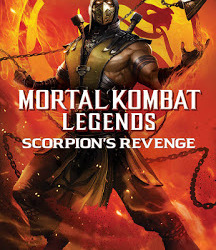
A couple weeks ago, the DLC story expansion to the videogame, Mortal Kombat 11 was released and added an additional few hours of narrative that picks up on where the core MK11 plot left off. I finished that up a few days ago, and picked away playing with the new characters and doing online battles with a friend I occasionally duke it out with online. On top of that, several weeks ago Warner Bros. released a straight-to-video animated movie dubbed Mortal Kombat Legends: Scorpion’s Revenge (trailer). Animated features based on the MK license are nothing new; one is include as a bonus feature on the original live action BluRay I reviewed here a few years ago. That and the other ones released in the previous century varied greatly in quality, and a pivotal difference with Scorpion’s Revenge is that it features some of the brains behind the highly acclaimed DC animated films working on it. Assault of Arkham’s Ethan Spaulding is directing, while Teen Titans Go vs. Teen Titans penned the script. I ate up too many MK comics, movies and videogames over the years so I have an admittedly high familiarity with its canon. With a title like Scorpion’s Revenge I was initially led to believe this would be a side story focusing on Scorpion’s rivalry with Sub-Zero. It initially starts out that way with Scorpion’s origin story where he returns to his village to see his family and fellow villagers slaughtered by a clan headed up by Sub-Zero. Sub-Zero (Steve Blum) ultimately slays him as well, and in hell Scorpion (Patrick Seitz) makes a deal with one Quan Chi (Darin De Paul) to restore his essence to enact revenge while also entering the Mortal Kombat tournament. That opening scene is graphically intense for an animated feature, and Warner Bros. granted the animators a lot of leeway to maximize everything they could out of the R rating. If you have played the recent MK games and are familiar with their ‘X-Ray Attacks’ then a lot of the gore and violence in Scorpion’s Revenge will ring a bell.

After that initial intense setup for Scorpion and Sub-Zero, the rest of the film is essentially a remake of the original live action film, yet has some noticeable differences to switch things up. Liu Kang (Jordan Rodrigues), Johnny Cage (Joel McHale) and Sonya Blade (Jennifer Carpenter) return as the three core protagonists that meet up once again on a boat leading to mysterious location where the Mortal Kombat tournament is emanating from. Sinister sorcerer, Shang Tsung (Artt Butler) is behind the festivities on his own personal island of hell, and has all kinds of trickery to distract the heroes. While the general broadstrokes of the live action film and this animated feature hits similar beats, a lot of it is freshened up. Some of the key battles feature different matchups, and the characters from the second game have varying degrees of supporting roles, and I feel for poor Jax (Ike Amadi) because the filmmakers here found a new way to de-arm him, which is as excruciating as ever to relive again and again. I got into Scorpion’s Revenge style of mixing up the exposition this time around. Sonya Blade has an edge to her and has absolutely zero tolerance for Cage’s nonstop flirting with her. Having Scorpion constantly out for revenge on Sub-Zero in their rivalry is a better use of those two characters instead of as lowly goons for Shang Tsung like in the live action film. Raiden (Dave B. Mitchell) is back as the wise elder with an occasional pun that guides the heroes along their journey and sets them up for an awesome final stretch of battles against Quan Chi, Goro and Shang Tsung. I will re-emphasize the gruesomeness of the violence here as the artists hold nothing back and ensure it matches the pedigree established by the games. It all adds up for a gritting finale as the warriors lay waste to one another.

There is a decent amount of bonuses on the BluRay. Producer, Rick Morales and Writer, Jeremy Adams are on hand for the feature commentary track. They go out of their way numerous times to appreciate Warner Bros. for letting them go all out with the violence and offer up other random insight and production facts throughout. There are four mini-behind-the-scenes extras totaling just over 20 minutes breaking down the characters, lore, weaponry, animation and sound design of the film. All are quick watches with an interesting anecdote or two, but not worth going out of your way to see….except maybe the one on sound design where it was amusing to see how they showcased all the various foods squished for the blood splatters and bone crushing sound effects. Part of me wants to give Mortal Kombat Legends: Scorpion’s Revenge an easy recommendation because of their excellent use of the license and canon that any MK nut like myself will get a thrill out of, and it is a breezy 80 minute watch to boot. Watching its take on remixing the plot from the heralded live action film for a new generation was something special to immerse myself in to witness how it all unfolded. However, if you are not all that familiar with the near 30 years of MK lore a lot of the characters and general plot beats will either go right over your head or will likely incite many unintentional chuckles. Suffice it to say, only fans of the series should go out of their way to see Mortal Kombat Legends: Scorpion’s Revenge. Bonus update, upon doing research for this I discovered the long delayed live action reboot film wrapped production at the end of 2019 and is currently slated for a January 2021 theatrical release date. Here is hoping it will up to the legacy of the original as being one of the best live action videogame film adaptations. Other Random Backlog Movie Blogs 3 12 Angry Men (1957) 12 Rounds 3: Lockdown 21 Jump Street The Accountant Angry Video Game Nerd: The Movie Atari: Game Over The Avengers: Age of Ultron The Avengers: Infinity War Batman: The Dark Knight Rises Batman: The Killing Joke Batman: Mask of the Phantasm Batman V Superman: Dawn of Justice Bounty Hunters Cabin in the Woods Captain America: Civil War Captain America: The First Avenger Captain America: The Winter Soldier Christmas Eve Clash of the Titans (1981) Clint Eastwood 11-pack Special The Condemned 2 Countdown Creed I & II Deck the Halls Detroit Rock City Die Hard Dredd The Eliminators The Equalizer Dirty Work Faster Fast and Furious I-VIII Field of Dreams Fight Club The Fighter For Love of the Game Good Will Hunting Gravity Grunt: The Wrestling Movie Guardians of the Galaxy Guardians of the Galaxy Vol 2 Hell Comes to Frogtown Hercules: Reborn Hitman I Like to Hurt People Indiana Jones 1-4 Ink The Interrogation Interstellar Jay and Silent Bob Reboot Jobs Joy Ride 1-3 Major League Man of Steel Man on the Moon Man vs Snake Marine 3-6 Merry Friggin Christmas Metallica: Some Kind of Monster Mortal Kombat National Treasure National Treasure: Book of Secrets Not for Resale Pulp Fiction The Replacements Reservoir Dogs Rocky I-VIII Running Films Part 1 Running Films Part 2 San Andreas ScoobyDoo Wrestlemania Mystery The Secret Life of Walter Mitty Shoot em Up Slacker Skyscraper Small Town Santa Steve Jobs Source Code Star Trek I-XIII Sully Take Me Home Tonight TMNT The Tooth Fairy 1 & 2 UHF Veronica Mars Vision Quest The War Wild Wonder Woman The Wrestler (2008) X-Men: Apocalypse X-Men: Days of Future Past
#Mortal Kombat#mortal kombat legends scorpions revenge#Scorpion#sub-zero#liu kang#johnny cage#joel mchale#steve blum#patrick seitz#darin de paul#jennifer carpenter#jordan rodriguez#jeremy adams#ethan spaulding
1 note
·
View note
Text
Dallas through the Looking Glass: Post-Truth and Kennedy Assassination Movies by Chris Evangelista
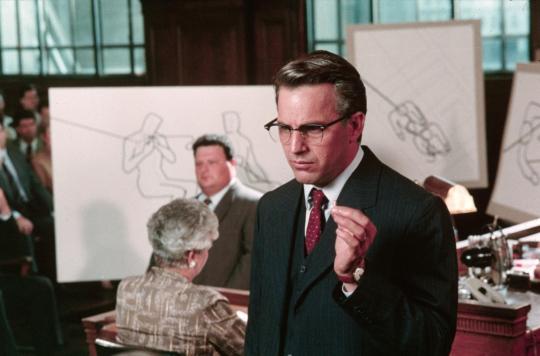
Here’s an alarming statistic: a recent CBS News poll revealed 74% of Republican voters believe the conspiracy theory that the offices of Donald Trump were wiretapped during the 2016 presidential campaign, despite there being absolutely no evidence to support that claim. But conspiracy theories are easy to grasp onto. Another poll, this one by Fairleigh Dickinson University, says 63% percent of American voters believe in “at least one political conspiracy theory.” There’s a strange comfort in believing a conspiracy—a sense that you are in the know, while others are on the outside looking in; that you, and a select few others, have discovered the truth, while everyone else is still in the dark.
Conspiracy theories surrounding presidents are nothing new. The wiretapping conspiracy theory, however, had the unlikely distinction of being made popular by the president himself, via Mr. Trump’s serially inaccurate Twitter feed. Trump himself has made his entire political career about conspiracy theories: his current ascendance in the world of politics, for instance, owes something to his leadership of the “Birther” movement—the not-so-thinly veiled racist belief that President Barack Obama is not an American citizen. At the time, Trump and his hateful ilk were on the fringe. Now they’re running the country. Welcome to the post-truth era. Welcome to the world of “alternative facts.”
Shortly after the startling 2016 presidential election, the Oxford Dictionaries selected “post-truth” as the international word of the year. The term is defined as “relating to or denoting circumstances in which objective facts are less influential in shaping public opinion than appeals to emotion and personal belief.” Yet this post-truth way of thinking is nothing new—rather, it has finally gone from existing somewhere on the fringes to playing a role in the mainstream. Perhaps the most overwhelming source of post-truth logic had been in plain sight for the last 53 years, in the conspiracy buff movement that has studied and dissected the November 22, 1963 assassination of President John F. Kennedy. And, as is the case with any event that shocks the world, it was only a matter of time before art attempted to make sense of reality.
In 1973, ten years after JFK’s assassination, Executive Action found its way into theaters, starring Burt Lancaster, with a script by Dalton Trumbo. Imagine if in 2011 a film about 9/11 being an inside job written by Aaron Sorkin and starring Tom Hanks had been released, and you might have some concept of how startling Executive Action likely seemed. Here was a no-nonsense thriller, inter-spliced with actual newsreel footage of Kennedy, concerning a shadowy cabal of businessmen who make up their minds to murder the president. They have their reasons: Kennedy pulling out of Vietnam will be bad; Kennedy’s support of civil rights will lead to a “black revolution”; Kennedy is taking the country in a distressingly “liberal” direction. What are a group of businessmen, oil tycoons, and ex-US intelligence members to do but put together a very intricate, somewhat convoluted plot to kill JFK and frame a hapless patsy, Lee Harvey Oswald?
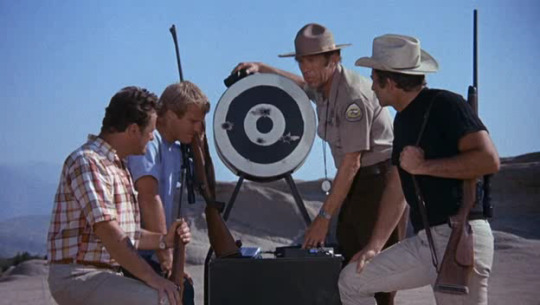
Executive Action was the brainchild of attorney and conspiracy buff Mark Lane, who wrote multiple books on the assassination. (Although rumor has it that it was actor Donald Sutherland who came up with the idea first, and tasked Lane with writing a script for him to star in.) Director David Miller’s approach to the script is workmanlike: lots of medium shots, lots of by-the-numbers blocking. No frills. But there is an undeniable effectiveness to the film, mostly in how calmly everything is handled. When you contrast this film with Oliver Stone’s JFK (more on that later), which tells almost the same story, it’s night and day. Stone’s film is frantic, unhinged, to the point that you can almost see the perforations as the film shakes off the reels. Executive Action is cold, businesslike, much like the men who nonchalantly plan to kill the most powerful man in the world. Lancaster, with his clipped cadence, has never been so chilling. He has a simple job—hire men to kill JFK—and he does it the way any everyman might approach a difficult but not impossible task. There’s no drama, no wringing of hands, no moral conundrum. It makes Executive Action all the more believable. Everyone is so calm and collected here that you can’t help but think, “Well, maybe this is how it happened.” (It’s not.)
On the heels of Executive Action came Alan J. Pakula’s darkness-drenched The Parallax View. Parallax isn’t a direct take on the Kennedy assassination, but the implications are unmistakable. Once again, we have a group of shadowy captains of industry pulling the strings behind the scenes. Once again, we have an unfortunate patsy set up to take the fall for a political assassination. Notice a thread here: a lone gunman is framed and blamed. An angry lone nut takes the fall while the real killers go unnoticed, or worse—remain in power, unstoppable. So disillusioned were the American people by both JFK’s death and Watergate that it was easy to believe the forces of darkness were calling the shots.
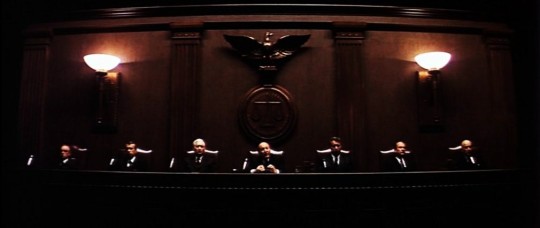
The bulk of narrative films that address the Kennedy assassination almost all revolve around the assumption that the official story—Lee Harvey Oswald acted alone—was bunk. After all, who was Oswald? A nobody. A scrawny runt with dyslexia. How could one insignificant man alter the course of history? At the same time, why isn’t it more believable that a man with an unstable personality carried out the Kennedy assassination, rather than a multi-tiered, far-reaching conspiracy of shadowy men in smoke-filled rooms? The real Lee Harvey Oswald was a controlling abuser—a man who beat his Russian wife and insisted she never learn English so that he would be her only point of contact in America; a man who resented any and all authority; and a man who, months before the assassination, in April, actually attempted to carry out another assassination of notorious John Birch Society member Major Edwin Walker (an event most conspiracy films never even mention).
If there is one film that conspiracy lore owes the most debt to, it’s Oliver Stone’s 1991 blockbuster JFK. A meticulously crafted, downright brilliant thriller, JFK blends fact and fiction so deftly that one could be forgiven for thinking the film was more of a history lesson than a piece of pop entertainment. Stone, for his part, did very little to clarify what his intentions were. He said in an interview with the New York Times that “every point, every argument, every detail in the movie...has been researched, can be documented, and is justified.” Stone also claimed the film was a “history lesson” and that he was “trying to reshape the world through movies.” Stone also dubbed himself a “cinematic historian” during promotion for the film. Years later, in Matt Zoller Seitz’s expansive The Oliver Stone Experience, Stone had changed his tune slightly: “I don’t call myself a historian. I call myself a dramatist.” In Seitz’s book, Stone seems to downplay the “every detail can be justified” claim and fall back on his speculative fiction angle, although he’s still clearly convinced of a conspiracy.
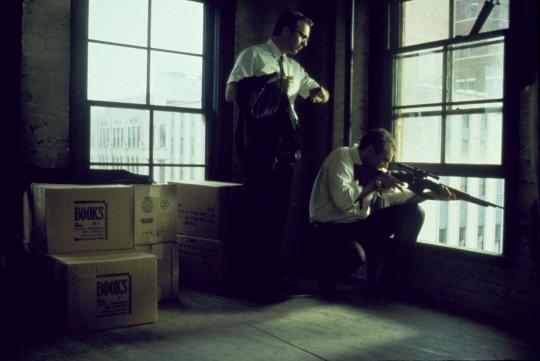
As a work of fiction, JFK is a masterpiece. Stone, a team of editors, and cinematographer Robert Richardson create an immersive trip through the wild world of JFK conspiracy lore. Stone needed a hero to center the film’s sweaty, paranoid ramblings, and he found it in New Orleans District Attorney Jim Garrison. As played by Kevin Costner, Stone’s Garrison is a Capra-esque hero, a truth seeker committed to doing the right thing, no matter what the cost. “Let justice be done though the heavens fall!” Garrison trumpets to a team of reporters. JFK has Garrison cracking open the Kennedy case by first looking into the time Lee Harvey Oswald (played with eerie chameleon-like fervor by Gary Oldman) spent in New Orleans, and then cracking open the whole can of worms. Oswald, Garrison learns, is just what he said he was—a patsy. The real killers of Kennedy were the military industrial complex, or maybe the FBI, or maybe the CIA, or maybe the mafia. Or maybe…. well, the list goes on. Despite Stone’s claims at the time of the film being a history lesson, he never presents an entirely concrete connection between any of these conspirators.
The first half of JFK sets up the pieces: here is who may have been involved with the assassination and we’re not sure how all these people fit together, but one thing we know for sure is that Oswald didn’t pull the trigger. The back end of the film turns into a courtroom melodrama, with Garrison bringing local New Orleans businessman Clay Shaw (played with a chilly sophistication by Tommy Lee Jones) to trial for being one of the lead instigators of the assassination plot. Eventually, Shaw is found innocent, and rightfully so—the film presents almost no real evidence to prove Shaw had anything to do with the alleged conspiracy, save for the testimony of a male prostitute, Willie O’Keefe (Kevin Bacon, having the time of his life). Here is where a moral conundrum arises: Clay Shaw was a real person, and really was brought to trial by Garrison. Willie O’Keefe is fictional, a character inspired by a man named Perry Russo. The problem: Russo was so undependable as a witness, his credibility so suspect, and his story so inconsistent, that Stone had to create a fictional character in order to get the story he wanted.
There are more problems with Stone’s approach. The real Jim Garrison was not the crusader for truth the film makes him out to be. The historical Garrison was actually a man who would’ve fit right in with the Trump administration. “Most of the time you marshal the facts, then deduce your theories,” said former First Assistant D.A. and Garrison associate Charles Ward. “But Garrison deduced a theory, then he marshaled his facts. And if the facts didn’t fit he’d say they had been altered by the CIA.” Garrison, for his part, even doubled down on this backwards logic, stating at one point, “The district attorney can make any statements he wishes,” truth be damned. Whatever evidence Garrison lacked, he seems to have fabricated. Most considered his bringing Shaw to trial a miscarriage of justice, and after Shaw was swiftly acquitted, Garrison mostly languished in obscurity. Even the conspiracy buffs distanced themselves from him. Then Stone, and Hollywood, came calling, and Garrison was back in the limelight.

If you’re able to remove the historical elements from JFK, you can easily enjoy it. But when you start to dissect the truth, or at least what’s known of the truth, the waters get murky. JFK’s Oswald is presented as an innocent bystander, unaware of the dark forces working behind the scenes to set him up for the biggest murder in American history. In one wisely deleted scene from the film, Stone even had the ghost of Oswald take the stand during the Shaw trial and flat-out proclaim, “I am innocent!” Vincent Bugliosi’s gargantuan Reclaiming History: The Assassination of President John F. Kennedy is one of the most definitive books written on the Kennedy assassination, and Mr. Bugliosi lays out page after page of evidence that points to Oswald’s guilt—evidence that’s either never touched on or outright altered in Stone’s film. Stone completely ignores the incident where Oswald, using the same gun that was proven to have killed Kennedy, attempted to kill Major Edwin Walker. The film also casually omits the fact that the morning of the assassination, Oswald received a ride to work from a coworker who claimed Oswald had a long, wrapped package with him. Oswald claimed the package was just “some curtain rods”—though why he was bringing curtain rods to work was a mystery. Also a mystery: after Oswald was arrested, he denied bringing any curtain rods. Later, the brown wrapping paper the “curtain rods” were wrapped in was found on the sixth floor of the Texas School Book Depository, where the shooting allegedly took place. So either Oswald really did bring curtain rods to work, unwrapped them, and then they mysterious vanished, or what he actually had was his rifle. Or perhaps the coworker was lying and in on the conspiracy.
Other casually omitted or altered facts from Stone’s film: during the assassination, a man named Howard Brennan looked up and saw Oswald in a window of the book depository, rifle in hand. Later, as Oswald fled the crime scene, he was believed to have shot and killed Officer J.D. Tippet. Stone’s film presents a scenario in which no one was able to identify Oswald as the shooter of Tippet, when in fact there were ten separate eyewitnesses who placed Oswald at the scene. The list goes on and on. The argument could be made that art has no obligation to the truth. Dramatic license is the bedrock of most biopics and “true story” films. But this is a gray area when it comes to JFK, a film with weighted dialogue like “Fundamentally, people are suckers for the truth. And the truth is on your side.” On top of this, JFK has the distinction of bringing about legislative changes. So popular was Stone’s film that Congress passed the President John F. Kennedy Assassination Records Collection Act of 1992, which established the collection of all U.S. records regarding the Kennedy assassination to be housed in the National Archives. All of this, coupled with the film’s newsreel opening, lends an air of legitimacy to JFK. It turns speculation into perceived truth, intentional or not.
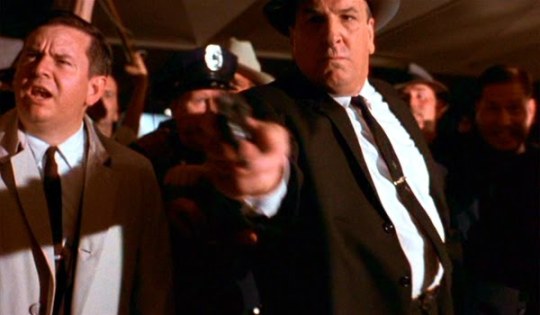
The year following JFK saw the release of Ruby, a film so far removed from historical fact that you’d be hard pressed to find anything true within its plot. Danny Aiello gives Oswald’s killer Jack Ruby a dignity the real Ruby never had, and turns him into something of a folk hero—a man who, like Stone’s Garrison, is committed to doing the right thing. Ruby borders on spy-thriller territory, with Ruby being drafted as a mafia hitman who gets wrapped up in a conspiracy spinning out of control. It’s mostly forgotten, and for good reason. Aside from Aiello’s soulful take on the Dallas nightclub owner, the film is unremarkable. 1993 gave audiences In the Line of Fire, where the Kennedy assassination haunts an aging Secret Service agent (played by Clint Eastwood) who was there that day in Dallas and failed to save Kennedy’s life. In the Line of Fire eschews conspiracy trappings but once again delegates Oswald to a footnote, an afterthought. In the film, a lone nut (played memorably by John Malkovich as something of an inhuman trickster) taunts Eastwood’s Secret Service agent with his plot against the current president via threatening phone calls. “Call me Booth,” Malkovich instructs Eastwood. “Why not Oswald?” Eastwood asks. “Because Booth had flair, panache,” replies Malkovich. “A leap to the stage after he shot Lincoln.” Oswald just isn’t dramatic enough for this assassin to emulate—and then again, maybe he was innocent?
2002’s Interview With the Assassin is an unjustly overlooked, highly creative take on conspiracy lore. Told in faux documentary style, the film follows an amateur filmmaker (Dylan Haggerty) approached by his elderly next door neighbor (a creepy yet hilarious Raymond J. Barry). The neighbor has a story to tell: it was he, not Lee Harvey Oswald, who delivered the fatal JFK head shot. As the filmmaker follows the alleged assassin, he first comes to believe the man’s story, then begins to have his doubts, convinced that the neighbor is just a deranged nut, before coming back around to belief for the film’s conclusion, all while the specters of shadowy government agents lurk in the background. Again, just as Executive Action and JFK deployed documentary-style footage to lend an air of legitimacy to their narratives, Interview with the Assassin is deceptively plausible. In fact, if you were unfamiliar with Raymond J. Barry, a great character actor with 114 screen credits to his name, you might actually fall into the Blair Witch Project trap and believe this really is a documentary, so believable and convincing is Barry’s performance.
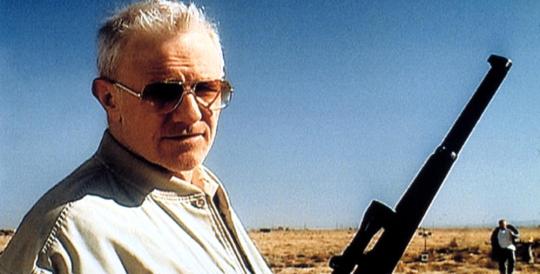
As the 21st century progressed, the filmic approach to the Kennedy assassination shifted. Conspiracy began to take a back seat to attempts at “setting the record straight.” Perhaps in the specter of 9/11, with its “inside job” nuts coming out of the woodwork to proclaim, “Jet fuel doesn’t melt steel beams!”, or in light of the deplorable “Sandy Hook truthers,” who have the unmitigated gall to claim the murder of 20 children was a “false flag,” Hollywood has lost its taste for propping up conspiracies. 2013’s Parkland told a Short Cuts-like story of the minutes and hours following the assassination: From the team of doctors who valiantly but fruitlessly tried to save JFK’s life to a befuddled Abraham Zapruder (Paul Giamatti) coming to terms with the fact that by filming the head shot he’s now in possession of the most important “home movie” in history to Robert Oswald (James Badge Dale), whose entire life is suddenly upended by his estranged brother Lee (Jeremy Strong). Parkland doesn’t delve into the investigation, but makes it clear it believes Oswald is the sole killer. The film is curiously flat, failing to hit any of the big emotional beats it strives for. Where it succeeds is in taking the time to show the blood and confusion inside the Parkland hospital emergency room, and it does highlight the surreal occurrence of Oswald being wheeled into the same hospital with his own fatal wound so soon after the assassination.
Oddly, the most historically accurate portrayal of the assassination, and the events leading up to it, can be found in a work of science fiction. The Hulu mini-series adaptation of Stephen King’s 11.22.63 draws on King’s meticulous research into Oswald, and shows Oswald’s tumultuous, abusive marriage as well as his failed assassination attempt on Edwin Walker. It also shows him pulling the trigger. The twist in this whole narrative is that this is a time travel story, about a 21st century English teacher (James Franco) who goes back in time to try to stop Oswald. Franco’s character can only travel to 1960, and thus has to wait it out till 1963. He can’t just outright kill Oswald, though, because the doubt remains: what if Oswald really is innocent? As a result, 11.22.63 becomes a detective story, with Franco’s time traveller trying to piece together evidence to prove beyond a reasonable doubt that Oswald really is going to kill JFK, and then stop him. Of all the JFK films, 11.22.63 is the first to truly represent how unpleasant and abusive Lee Harvey Oswald was. As played by Daniel Webber, Oswald is a cruel jerk with delusions of grandeur, convinced he’s destined for greater things if only everyone would just get out of his way. This is closest to the real Oswald, based on the testimony of those who knew him, including his wife Marina. At one point, the real Oswald even boasted that one day he’d obtain the non-existent office of “Prime Minister of America.” The Oswald in 11.22.63 is an entirely different species than the sainted black-and-white ghost who takes the stand in JFK and proclaims his innocence.
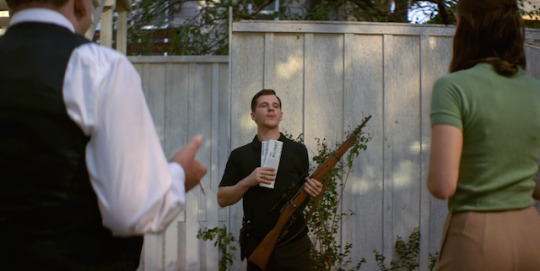
Pablo Larraín’s recent Jackie took the assassination narrative further than any film before it by dealing directly with the effect it had on both the nation and Kennedy’s widow (Natalie Portman). Jackie is obsessed with myth making, and much like the myths and conspiracies that sprung up in the years following JFK’s death, the film is awash in events that bend the truth and stagger the mind. A numbing effect sets in, as grief gives way to acceptance and some attempt at understanding. As doctors perform an autopsy on her husband at Bethesda Naval Hospital, Jackie, her pink dress stained with blood and gore, paces around the emergency room in a fury. “It had to be some silly little communist,” she spits as word of Oswald’s arrest for the murder spreads. “If [Jack had] been killed for civil rights, at least then it would have meant something, you know?” This line of dialogue from Noah Oppenheim’s script gets to the heart of the conspiracy movement: perhaps if the reasoning behind Kennedy’s murder had been some grander scheme instead of the actions of a lone gunman grasping at fame, then maybe there would be more meaning behind all of this. Maybe then life wouldn’t be so arbitrary, so random.
Jackie plans her husband’s funeral as pageantry; it’s not just a somber service, it’s a Hollywood remake of Abraham Lincoln’s funeral, with a march through wintry streets as all the world is watching. Following the funeral, she tells her story to a reporter (Billy Crudup), but she dictates the direction the story goes. She wants final approval over his story, and forbids him from writing up certain elements—like the fact that she smokes. “I’m just trying to get to the truth,” Crudup’s reporter says. “The truth?” Jackie replies. “Well I’ve grown accustomed to a great divide between what people believe and what I know to be real.” “Fine,” says the reporter. “I’ll settle for a story that’s believable.”
So must we all, especially here in whatever post-truth reality we find ourselves stuck in. The problems begin when we decide to pick and choose what it is we consider “believable,” and who we believe. “People like to believe in fairytales,” Portman’s shell-shocked Jackie tells us. Before the 2016 presidential election, one could safely argue the case for eschewing truth for the sake of art. Now, things might not be so simple. A decisive lack of truth unquestionably contributed to our current situation, just as a decisive lack of truth is integral to the bulk of the films that attempt to dissect the JFK assassination. In these films, the truth is what we make of it. Some may find comfort in that, but these days, the implications are terrifying.

#jfk#jfk assassination#john f kennedy assassination#lee harvey oswald#oliver stone#JFK movie#clint eastwood#executive action#donald trump#post-truth#fake news#burt lancaster#dalton trumbo#the parallax view#jim garrison#pablo lorrain#in the line of fire#parkland#11.22.63#musings#oscilloscope laboratories
13 notes
·
View notes